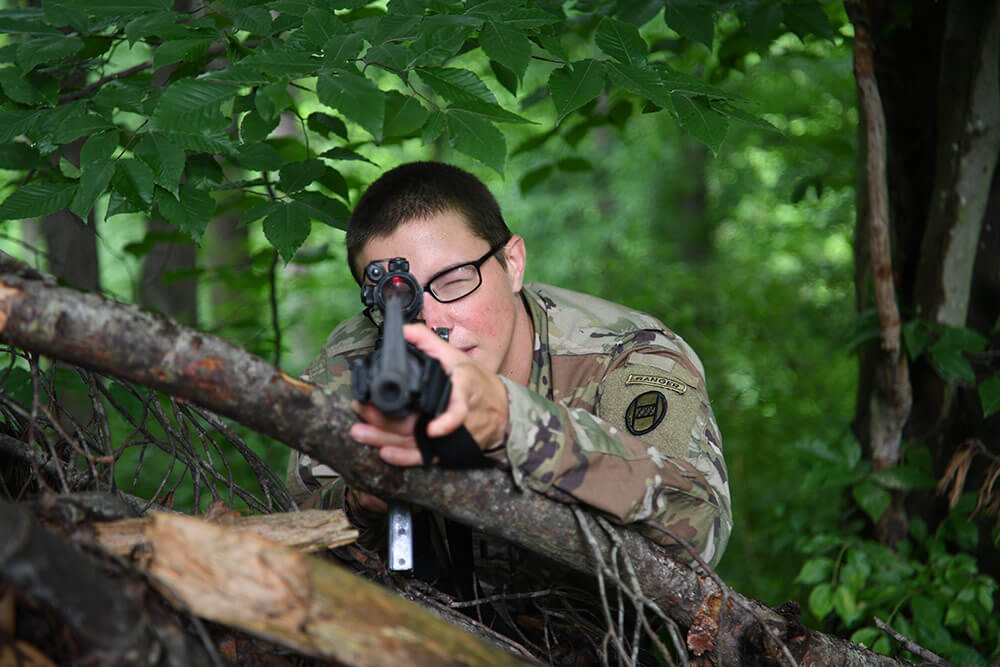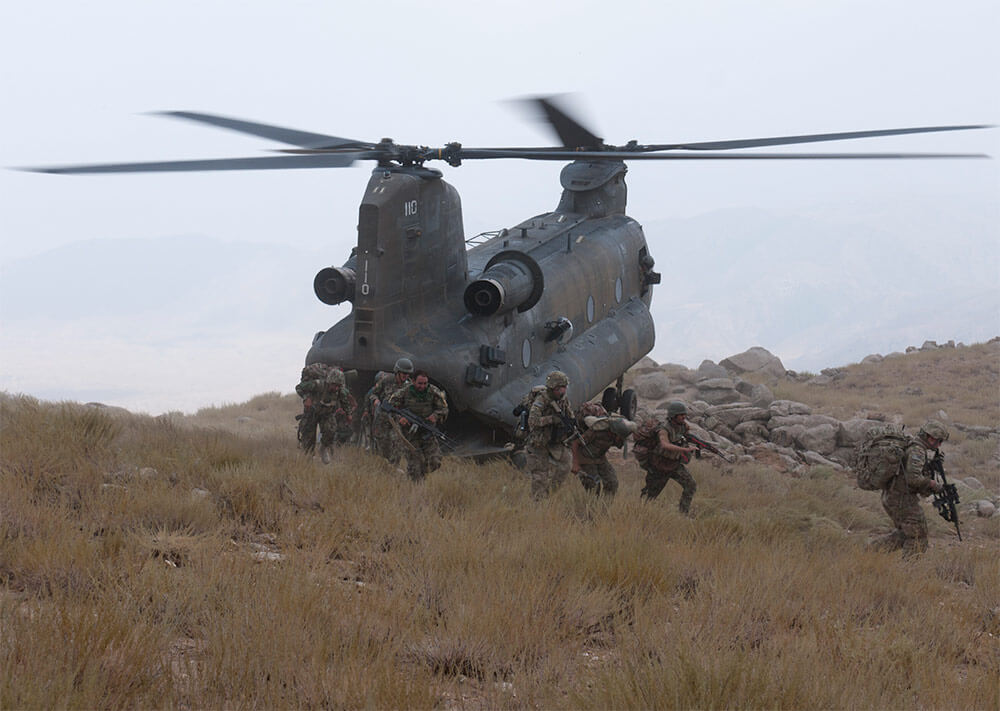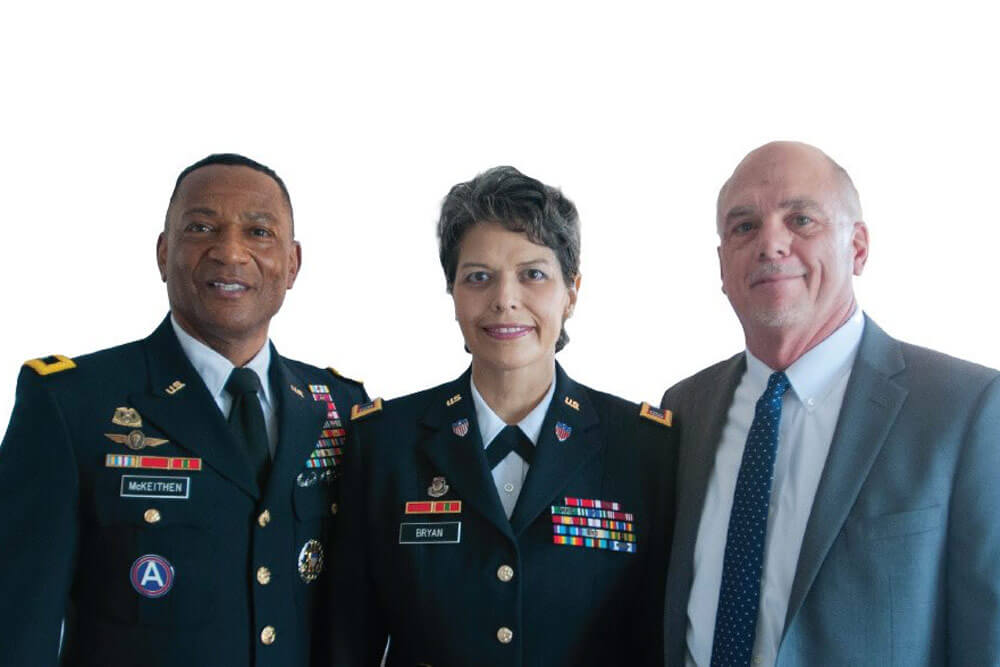A CBRN Defense Partnership
Thirty-four Soldiers from the Indiana and Texas Army National Guard took to Slovakia this past spring to participate in an international CBRN exercise.

The annual exercise called Toxic Lance is a two-week training event held by the Slovakian CBRNE Battalion with participation from the Czech Republic’s CBRN Regiment. From March 10–25, 2018, Soldiers trained at Lest Training Area in Slovakia to build interoperability and strengthen their skills in chemical warfare.
“We were cross-training with the Czechs and Slovakians,” explained SSG James Cooper of the 438th Chemical Company, Indiana Army National Guard. “We trained on operations of decontamination and reconnaissance of CBRN.”
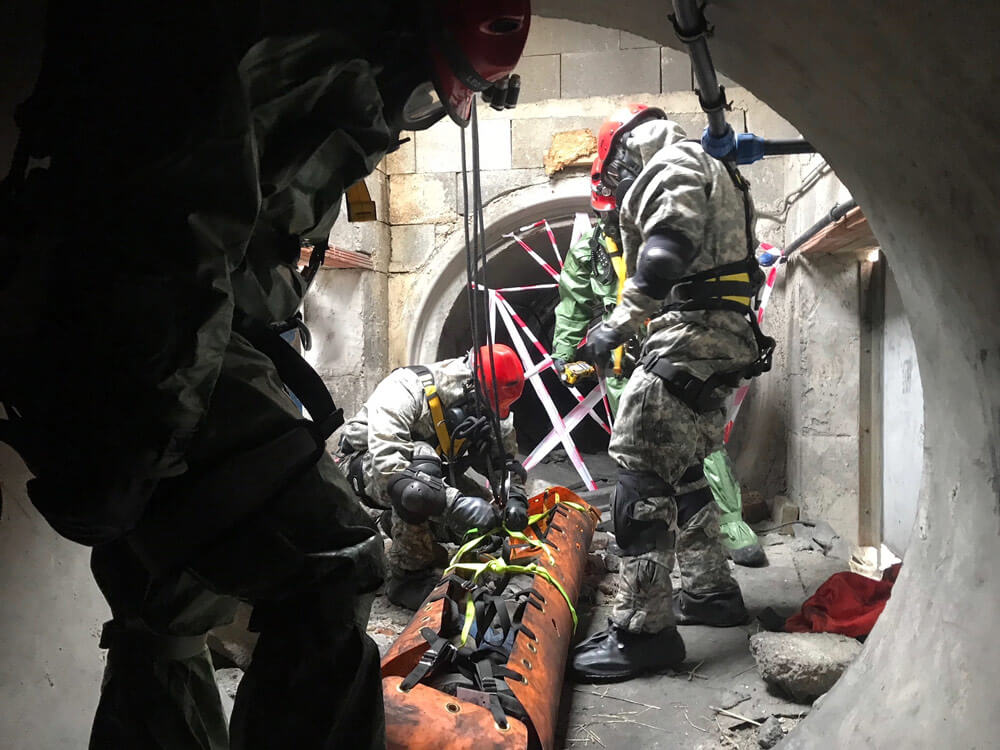
The first week of Toxic Lance not only consisted of scenario-based training on CBRN decontamination, reconnaissance and surveillance, but also on space tunnel entry, clandestine lab sampling, outdoor soil and water sampling, and search and rescue. At the end of the week, Soldiers demonstrated their new learning in a simulated response that required the detection of live Chemical Warfare Agents including Lewisite, Di-Phosgene, Mustard and Sarin.
Week two of the exercise covered many of the same training topics as week one, but with one significant adaptation. Instead of operating in a classroom as they did in the first half of the course, they were responding to the fictional threat in both a large tactical maneuver space and in actual urban terrain. In the second week of training, Soldiers of the three CBRN platoons from the United States, Slovakia and Czech Republic worked together to establish search and rescue elements, medical triage of contaminated victims and emergency decontamination stations.
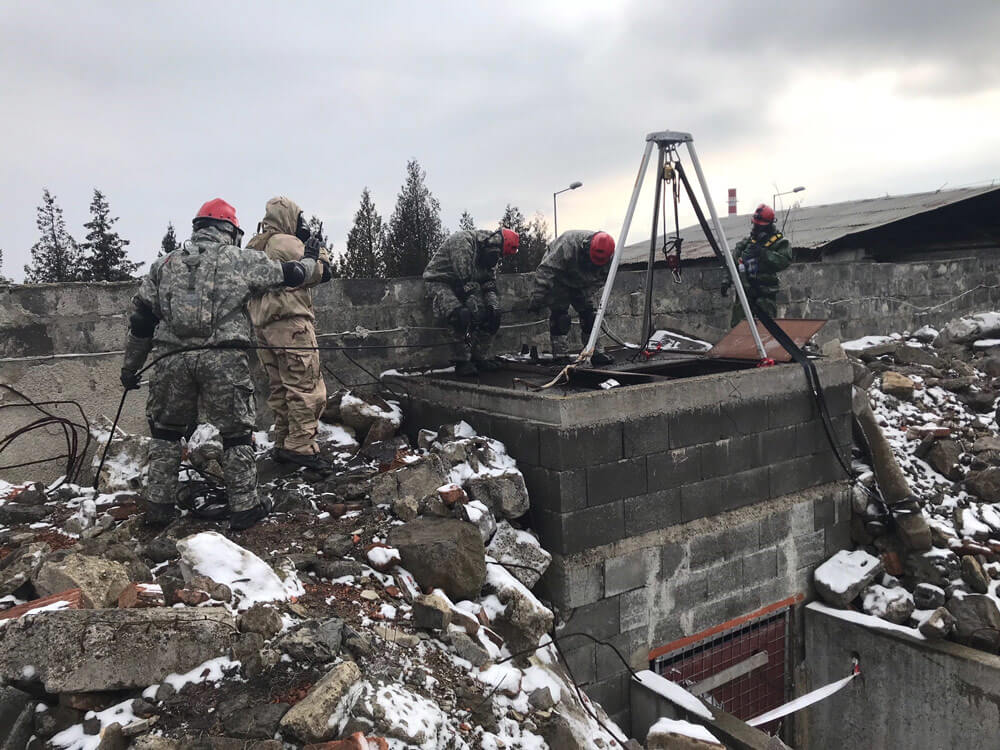
The Indiana Army National Guard’s 438th Chemical Company participated in Toxic Lance through the Indiana National Guard’s 24-year State Partnership with Slovakia. Working with their Slovakian counterparts for well over two decades, members of the Indiana Guard have been able to foster a positive relationship with the Slovakian army that grows with each exercise.
“Every time we go [to Slovakia], we try to man half of the group with those who have never been and half of the group with those who have; that way, the Slovakian army sees familiar faces [from the U.S.],” explained MSG Jeffery Jackson, observer-controller-trainer for the 438th.
“We have an excellent working relationship with the Soldiers from Slovakia and the Czech Republic,” said 1SG Craig Davis of the 438th. “It’s really a great feeling when you go to another country and Soldiers [there] are happy to see you. They welcome us back.”
Also participating in Toxic Lance were Soldiers of the Texas Army National Guard’s 836th Engineer Company, 136th Maneuver Enhancement Brigade. The Texas Guard Soldiers are search and rescue-qualified, and tasked with providing real-world response to FEMA Region VI as part of the 136th’s Homeland Response Force.
Seeking to increase its capabilities in protecting its citizens from the threats presented by extremist and terrorist organizations, the Slovakian army is currently focused on improving its rapid mobilization response operations and enhancing its rescue techniques that would be used during a chemical attack. Soldiers from the 836th participated in the Toxic Lance training to provide search and rescue guidance to the Slovakian soldiers.
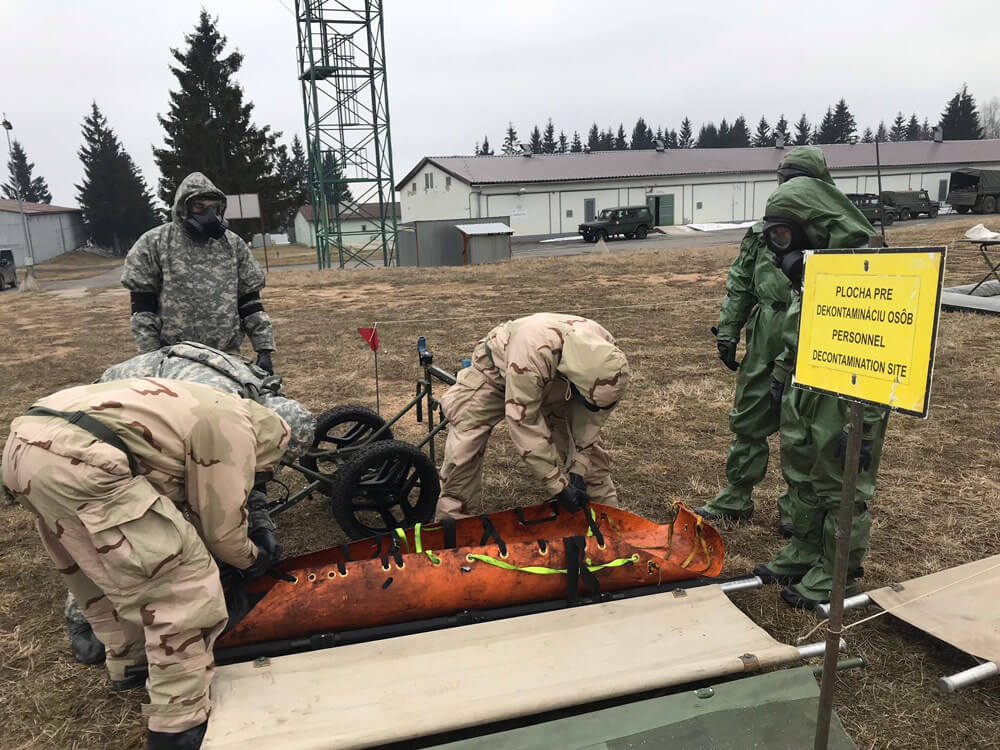
“We do not have any type of search and rescue units, or soldiers trained in that discipline here in the Slovak army,” said Lt. Col. Oliver Toderiska, CBRNE Battalion commander for the Slovakian army. “Seeing the Texas Soldiers integrated with our chemical response teams, working hand in hand with our own soldiers, shows us how we could also use search and rescue.”
During Toxic Lance, U.S. Soldiers were merged into Slovakian and Czech platoons. The initial transition into the platoons presented a few challenges, including communication barriers, which slowed effective integration.
“At first, [soldiers of] all three nations struggled with the language barrier, but they immediately began working on different methods of communication to overcome this struggle,” MSG Jackson said.
MSG Jackson went on to note the learning opportunity present in the struggle.
“The language barrier allowed the opportunity for U.S. Soldiers to refresh their CBRN and S&E [science and engineering] knowledge,” he said. “The language barrier forced the U.S. soldiers to break each step down to the simplest form to share the knowledge.”
Toxic Lance incorporated situations where Soldiers were exposed to live chemical agents. Each day, the exercise presented a new scenario where Soldiers needed to respond to a fictional threat. One scenario simulated a lab run by a terrorist organization that had manufactured and released a chemical weapon.
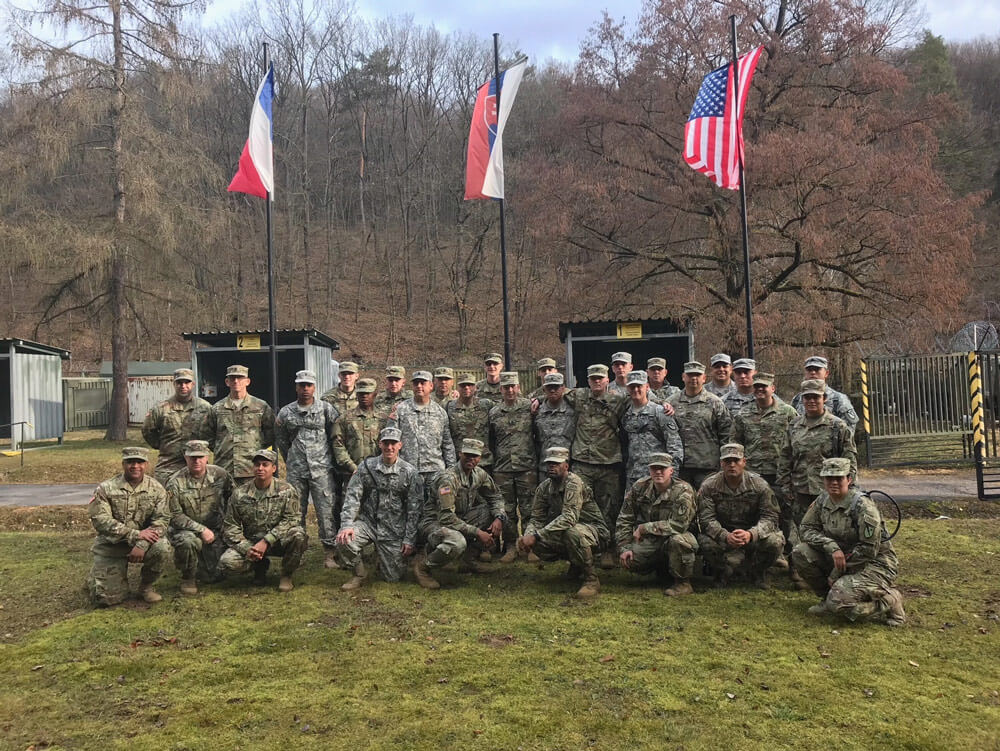
Though the Soldiers of the 836th were participating in the training to impart knowledge concerning search and rescue, they had little experience with CBRN. When the Texas Guard Soldiers integrated with the Slovakian army – one of the world leaders in CBRN defense – during the CBRN exercises, the tables were turned and the teachers became the students.
“The 836th had never experienced working in a CBRN environment and therefore had [trouble] adjusting their SOPs,” explained MSG Jackson. “Towards the end of the exercise, the 836th Engineer Company showed great improvement and had adjusted their SOPs accordingly.”
For some of the Texas Soldiers, Toxic Lance represented their first time being exposed to a live chemical agent.
“We’ve worked a lot with performing in and mitigating radiation threats, but we have not spent a lot of time on weaponized chemical agents,” said SGT Myles Merriweather of the 836th. “We can take what we’ve learned here and use it to establish our own [processes] back home.”
The training with the Slovakian and Czech forces gave many of the U.S. Soldiers unexpected insight on how specific areas of their own training – areas that they previously did not realize were lacking – could be broadened to encompass more.
“The training gave me a new perspective on how search and rescue operations can integrate into chemical reconnaissance,” said SPC Katty Gracia of the 836th. “Even with a language barrier, it’s amazing what you can accomplish when you have a common goal and the right motivation.”
MSG Jackson said he was impressed by the improvements Soldiers made throughout the entire exercise.
“Every day, the integration of the U.S. Soldiers into their respective [Czech and Slovakian] platoons improved to the point where they were working together effectively and efficiently,” remarked MSG Jackson. “Throughout the first week, both platoons were given different suggestions of how to improve each country’s SOP. During the second week, each platoon took those suggestions under consideration. Some of the suggestions worked out really well and were adapted by each platoon. By the end of Toxic Lance, each nation was able to take the lessons learned from the others, adjust their own SOPs and collaborate with all three groups to form a smooth and effective unit.”
The exercise served as a challenging hands-on experience that encouraged the sharing of different techniques and procedures.
“My favorite aspect was learning other countries’ decontamination methods,” said 1SG Davis. “The Slovaks used different equipment for chemical biological decontamination, which is educational for U.S. troops.”
“It is live agent training, so it is dangerous,” said MSG Jackson. “[The Slovaks and Czechs] have safety procedures they use that we don’t use. We learned about their work ethic, their methods of decontamination versus ours and about their culture.”
Along with learning the CBRN procedures of the Slovak army, the time in Slovakia also gave the U.S. troops the opportunity to learn about their Eastern European counterparts from a cultural perspective. The final two days of Toxic Lance were designated “Diversity Days,” where U.S. Soldiers were given the chance to experience the Slovakian culture outside of the military training area.
“The Slovak soldiers and American Soldiers got together and [the Slovaks] took us out to eat their traditional meals and tour some of the castles,” said SFC Doug Davies of the 438th. “We were able to hang out with them and get to know them personally.”
After participating in Toxic Lance, these Indiana and Texas Army National Guard Soldiers can feel confident in their ability to work with their partners from Slovakia and the Czech Republic to capably respond to a chemical attack anywhere in the world.
“The biggest takeaway from this is if we actually had to go to Slovakia or the Czech Republic, or somewhere in Europe, we could work side by side with [their forces] because we’ve been training with them,” 1SG Davis said. “In the event that we ever have to do a joint exercise in a real-world mission, they know our procedures and we know their procedures.”
MSG Jackson said, “In a real-world chemical biological attack, we would be well-prepared.”
BY STAFF WRITER Tatyana White-Jenkins
Army National Guard photos by SSG Steven Smith
